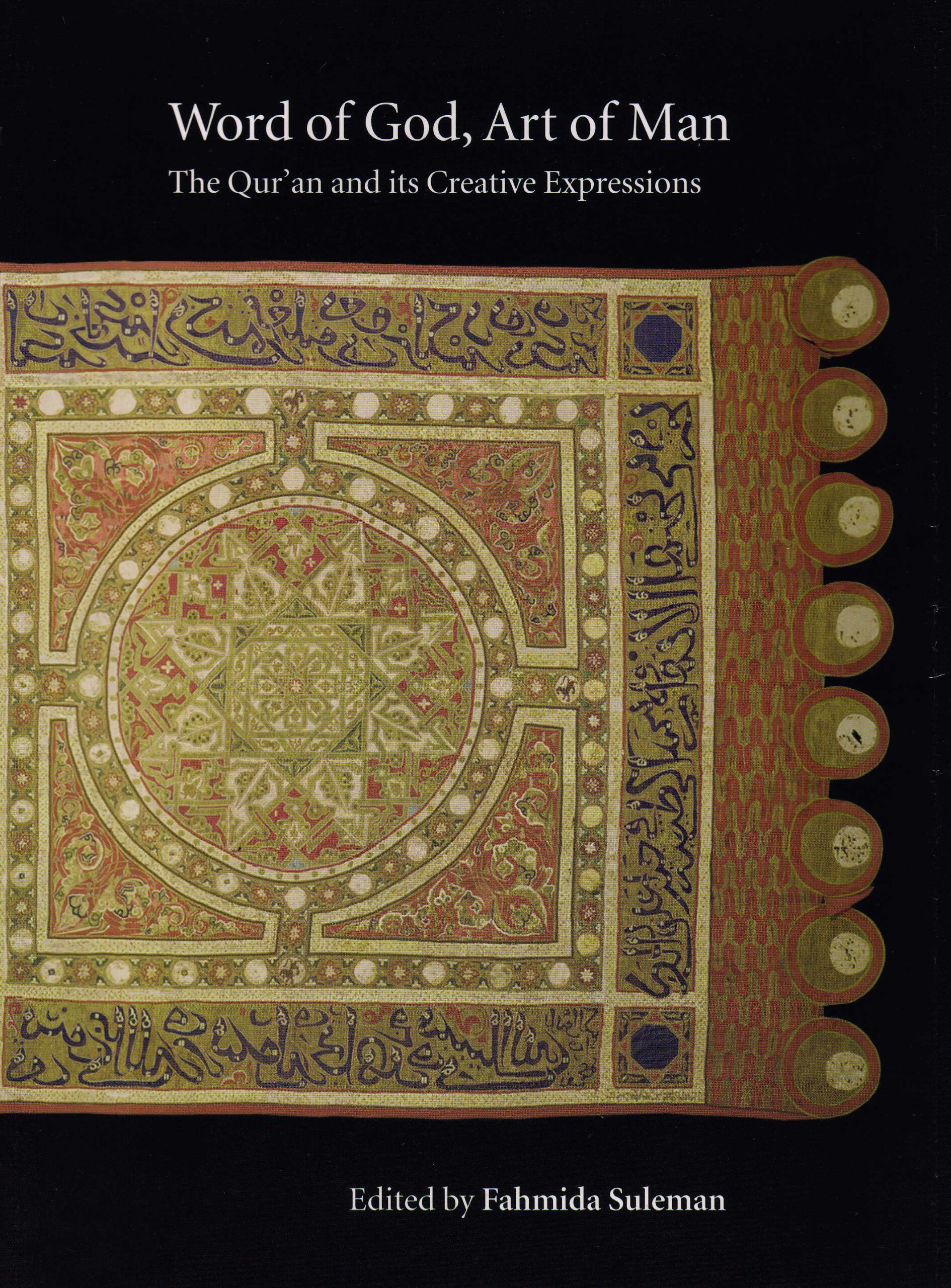Muslim reverence for the Qur’an(also Koran. Arabic term meaning, ‘recitation’ or ‘scripture’): Muslims believe that the Holy Qur’an contains divine revelations to the Prophet Muhammed received in Mecca and Medina over a period of… More as the Word of God has manifested itself in various artistic forms throughout history and up to the present day. This innovative collection of essays explores creative expressions of the Qur’an in a wide range of media, presenting selected proceedings from the 2003 international colloquium ‘Word of God, Art of Man: The Qur’an and its Creative Expressions’, organised in London by the Institute of Ismaili Studies. With contributions from museum curators and leading scholars in the fields of art and architectural history, palaeography and material anthropology, the volume offers a multi-disciplinary approach to the questions of how, why and in what contexts the Qur’an has inspired Muslim artists and craftspeople.
List of illustrations
Note on transliteration, translation and abbreviation
Opening address by His Highness Prince Karim Aga KhanA title granted by the Shah of Persia to the then Ismaili Imam in 1818 and inherited by each of his successors to the Imamate.
1: Introduction
Fahmida Suleman
Opening Reflections
2: The Qur’an as a source of artistic inspiration
Oleg Grabar
Qur’anic Calligraphy and Inscriptions in the Medieval Muslim World
3: Beyond the secular and the sacred: Qur’anic inscriptions in medieval Islamic art and material culture
Doris Behrens-Abouseif
4: Arts of the Celestial Pen: Qur’ans from the Library of The Institute of Ismaili Studies
Duncan Haldane
5: Qur’anic inscriptions on Sinan’s imperial mosques: a comparison with their Safavid and Mughal counterparts
Gülru Necipoglu
6: And the Word of your Lord has been fulfilled in truthfulness and righteousness’: Qur’anic inscriptions on Fatimid coinage, AH 296–488/AD 909−1095
Alnoor Jehangir Merchant
Amulets, Talismans and Magic
7: Amulets inscribed with the names of the ‘Seven Sleepers’ of Ephesus in the British Museum
Venetia Porter
8: A magic mirror in the Louvre and additional observations on the use of magic mirrors in Yemen today
Anne Regourd
9: Persian glosses on a Qur’anic manuscript from Central Asia
Marie Efthymiou
The Qur’anic Text in Recent Times
10: The art of Qur’anic penmanship and illumination among Muslim scholars in southwestern Nigeria
Ismaheel Akinade Jimoh
11: The art of the Qur’an in Southeast Asia
Annabel Teh Gallop
12: Qur’anic inscriptions on woodcarvings from the Malay Peninsula
Huism Tan
13: Sacred calligraphy in contemporary art
Ayse Turgut
Qur’anic Inscriptions on Textiles
14: Ka‘ba covers and their inscriptions
Hülya Tezcan
15: Qur’anic inscriptions on the so-called ‘Pennon of Las Navas de Tolosa’ and three Marinid banners
Miriam Ali-de-Unzaga
Final Reflections
16: Written, spoken, envisioned: the many facets of the Qur’an in art
Sheila S. Blair
Notes on contributors
Glossary
Bibliography
Index
Index of Qur’anic citations
‘this is a beautifully presented and carefully edited collection of studies, capable of engaging readers from outside the narrow confines of Islamic art history as well as those within it.’
– Margaret Graves, Der Islam
‘A superb collection… Over and above the consistently high quality of the individual contributions, a major strength of Suleman’s collection is its breadth of chronological and geographic coverage.’
– John Renard, Religion and the Arts
Fahmida Suleman is a Research Associate and Qur’anic Studies Project Coordinator at The Institute of Ismaili Studies, London, where she lectures on Islamic material culture. Her doctoral dissertation at Oxford University discussed the iconography on lustre ceramics from Fatimid Egypt as a source of medieval social and cultural history. Her research interests include the arts and material cultures of the medieval Mediterranean; figural representation in Islamic art; Muslim religious iconography; arts of the Qur’an; and the social history of medieval Islamic societies.

